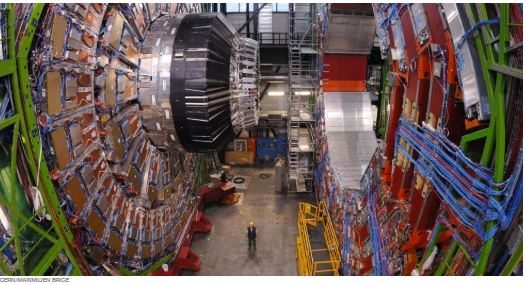The Large Hadron Collider is taking a two year break to undergo vital upgrades that will empower the next phase of groundbreaking research.
Built between 1998 and 2008, the Large Hadron Collider (LHC) is both the most powerful particle accelerator and the largest machine in the world. Situated underground between the border of France and Sweden, the LHC has been responsible for some of the most vital research in particle physics in modern history. A recent feature by The New York Times highlights the history of the record-holding project and offers a stunning virtual tour of the massive machine.
In order to get a look at some of the most basic building blocks of the universe, we have to smash what’s there into even smaller bits and pieces. The LHC does this using a 17-mile electromagnetic track where magnets which are one hundred thousand times as strong as the Earth’s magnetic field fling particles into one another 600,000 times a second. It’s a feat of engineering that requires 12,000 amperes of electrical current (a typical household outlet is rated at 15 to 20 amperes.)
Particle collisions within the LHC are quite common, occurring at 40 million times per second. Still, very few collisions produce noteworthy results, in fact that’s how the LHC operates. Before any particles are fired computer predict the expected results of any collisions. As results are gathered they are compared to these predictions and only those with unexpected results are returned to researchers saving immense amounts of data processing time. This is how data from the LHC confirmed the existence of a then theoretical Higgs Boson particle which appears in only one of every 10 billion collisions.
Presently engineers are improving a series of smaller tracks that are responsible for speeding up protons before they enter the main collider. The upgrades should be completed in 2021, after which the LHC will run for two more years until its next shutdown in 2024. Next new magnets will be installed, allowing even more intense collisions to take place. At this point the machine will be known as the High Luminosity L.H.C and is expected to continue contributing to research efforts until 2035.

